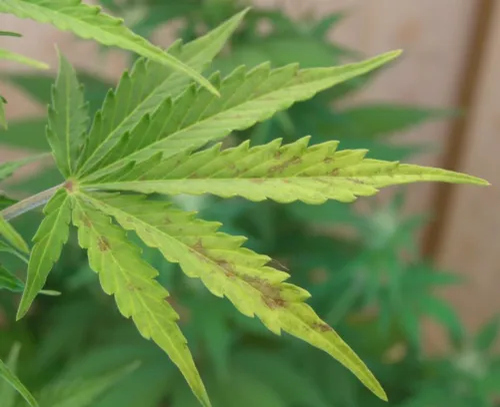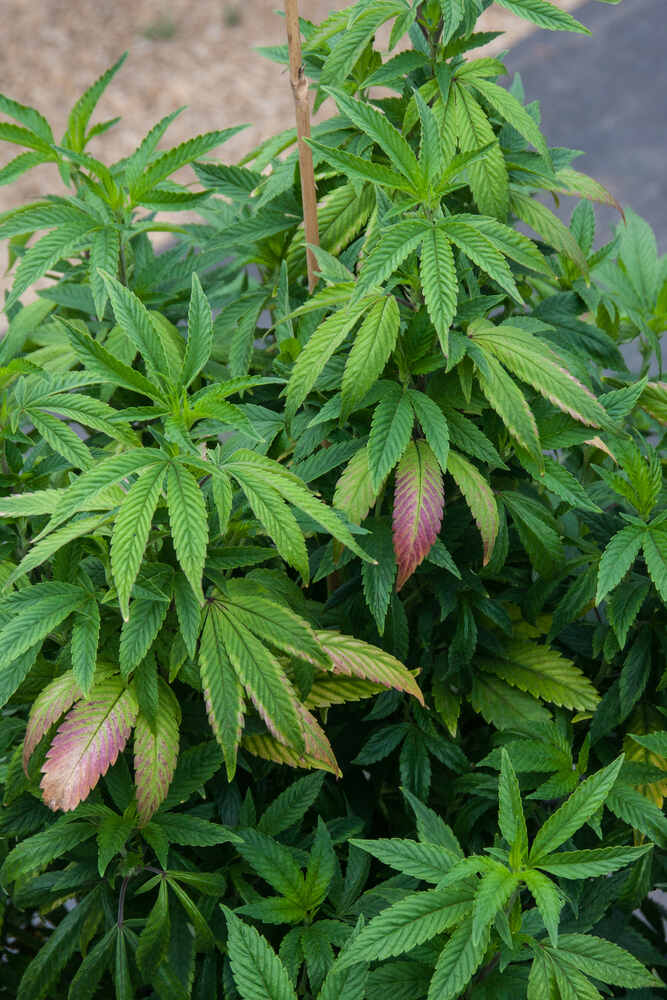The Best Fluffy Pancakes recipe you will fall in love with. Full of tips and tricks to help you make the best pancakes.

Identify and Fix Phosphorus Deficiency in Cannabis
Phosphorus deficiency in weed can be a real headache, especially if you’re trying to grow healthy, happy plants. This issue can slow growth, mess with your bud development, and leave your marijuana plants looking sickly. But don’t worry, I’ve got your back! By the end of this, you’ll know how to identify and fix phosphorus deficiency in your cannabis plants like a pro.
What is Phosphorus and Why is it Important for Cannabis Growth?
Phosphorus plays a crucial role in the growth and health of your marijuana plants. It’s like the power station of nutrients, fueling energy production and helping your plants thrive. Without enough phosphorus, your plants won’t develop properly, and that’s something no grower wants.
The role of phosphorus in cannabis development
Phosphorus is a key player when it comes to energy transfer within your plants. It’s involved in photosynthesis (the process that turns light into food), root growth, and flower development. Basically, without phosphorus, your marijuana plants don’t have the fuel they need to grow strong roots or produce those nice, fat buds.
How phosphorus impacts root and bud growth
If you want healthy roots and robust buds, phosphorus is your best friend. It encourages root development early on and gives your plants the boost they need to produce dense, potent buds during flowering. That’s why phosphorus is most important during the flowering stage, helping to produce higher yields.
Symptoms of Phosphorus Deficiency in Cannabis
Spotting phosphorus deficiency early is key. The symptoms can start off subtle but quickly escalate if you don’t step in. Learn the common signs so you can catch it before it affects your harvest.

Visual signs in leaves and stems (discoloration, dark spots, purple hue)
The first signs of phosphorus deficiency often appear in the leaves. They might turn dark green, bluish, or even purple. If things get worse, you’ll notice brown or black spots forming on the lower leaves, and stems might start to turn reddish or purple too. These are clear warning signs that your plants need more phosphorus.
Growth issues caused by phosphorus deficiency (stunted growth, poor bud development)
If your plants are growing slower than usual or staying smaller, phosphorus deficiency could be one of the causes. Without enough phosphorus, your plants won’t have the energy to grow properly. Buds may remain small, and their overall development will suffer, meaning less harvest and lower quality.
Causes of Phosphorus Deficiency in Cannabis
So, what causes phosphorus deficiency in the first place? There are a few different factors at play, and understanding these will help you avoid future problems.
pH imbalances affecting phosphorus uptake
The most common cause of phosphorus deficiency is pH imbalance. If the pH in your growing medium is too high or too low, your plants won’t be able to absorb phosphorus, even if it’s there. In soil, the ideal pH range for phosphorus absorption is 6.2–7.0, while in hydroponic setups, it’s 5.5–6.2.
Cold temperatures hindering phosphorus absorption
Cold temperatures can also mess with phosphorus uptake. When the temperature drops below 60°F (15°C), your plants will struggle to absorb phosphorus. So, if you’re growing outdoors or in a cold environment, make sure to keep your plants warm enough to prevent this issue.
Nutrient lockout due to overfeeding or excess minerals
Overfeeding or using too many nutrients can cause a build-up of salts, leading to nutrient lockout. This means your plants won’t be able to access the phosphorus in the soil. Too much iron or zinc, for example, can prevent phosphorus absorption. If you think this is happening, it’s time to flush your system with pH-balanced water to reset things.
How to Fix Phosphorus Deficiency in Cannabis
Once you’ve identified phosphorus deficiency in your plants, it’s time to take action. Here’s how you can treat the problem and get your plants back on track.
Adjusting soil or hydroponic pH to optimize phosphorus availability
The first step in fixing phosphorus deficiency is checking and adjusting the pH of your soil or hydro system. Remember, phosphorus is best absorbed in a pH range of 6.2–7.0 for soil and 5.5–6.2 for hydro. Use a pH meter to check your levels, and adjust as needed with pH-up or pH-down solutions.
Selecting phosphorus-rich fertilizers and amendments
Once your pH is in the right range, you can add a phosphorus-rich fertilizer to give your plants a boost. Look for fertilizers with a high phosphorus content, like those with an NPK ratio of 5:7:10 or similar. Organic growers can use bone meal, bat guano, or fish meal to increase phosphorus levels naturally.
Correcting temperature and environmental factors
If your grow room is too cold, your plants won’t be able to absorb phosphorus properly. Keep the temperature between 70–85°F (20–29°C) for optimal nutrient absorption. Also, make sure your plants have enough light and proper airflow, as environmental stress can exacerbate nutrient deficiencies.
Preventing Phosphorus Deficiency in Cannabis
The best way to handle phosphorus deficiency is to prevent it from happening in the first place. Here’s how to keep your plants healthy and phosphorus levels in check.
Ensuring balanced nutrient feeding schedules
To prevent phosphorus deficiency, make sure your plants are getting a balanced nutrient feed throughout their life cycle. During the flowering stage, switch to a bloom fertilizer with a higher phosphorus content to support bud development. Don’t overdo it, though—too much phosphorus can cause toxicity.
Using soil amendments like mycorrhizal fungi for enhanced phosphorus uptake
Mycorrhizal fungi can work wonders in helping your plants absorb more phosphorus. These beneficial fungi form a symbiotic relationship with your plants, extending their root systems and increasing nutrient uptake. Consider adding a mycorrhizal inoculant to your soil or grow medium for a natural phosphorus boost.
Common Mistakes and Misdiagnoses in Phosphorus Deficiency
Sometimes phosphorus deficiency can be tricky to diagnose because other nutrient deficiencies look similar. It’s important to rule out other issues before jumping to conclusions.
Confusing phosphorus deficiency with other nutrient issues (e.g., nitrogen or potassium deficiencies)
Phosphorus deficiency symptoms can look a lot like nitrogen or potassium deficiencies. For example, purple stems can be a sign of phosphorus or nitrogen deficiency, so it’s crucial to check your plant’s overall health and the specific symptoms before making changes.
Managing nutrient toxicity while addressing phosphorus deficiency
It’s easy to go overboard with fertilizers when trying to fix phosphorus deficiency, but too much phosphorus can cause nutrient toxicity. This can lead to other problems, like a lack of zinc or iron. Always monitor your plants closely and adjust your feeding regimen slowly to avoid overdoing it.
FAQ
What causes phosphorus deficiency in cannabis plants?
Improper pH levels, cold temperatures, and nutrient lockout are common causes of phosphorus deficiency. These factors prevent weed from absorbing phosphorus, even if it’s present in the soil or nutrients.
How can I identify phosphorus deficiency in my cannabis?
Look for dark green, bluish, or purple leaves, brown or black spots, and slow growth. Purple stems and stunted buds are also signs your marijuana plants may be lacking phosphorus.
What is the best pH range to fix phosphorus deficiency?
In soil, aim for a pH range of 6.2–7.0. For hydroponic systems, maintain a pH range of 5.5–6.2 to ensure optimal phosphorus uptake by the roots.
Can phosphorus deficiency be fixed with organic nutrients?
Yes, organic amendments like bone meal, bat guano, and fish meal are great sources of phosphorus. These can be used to treat deficiencies naturally without chemical fertilizers.
How do cold temperatures impact phosphorus uptake in cannabis?
Cold temperatures below 60°F (15°C) can block phosphorus absorption, leading to deficiency. Keep your grow room warm to prevent this from happening.
Phosphorus deficiency in cannabis can slow down your grow, but it’s nothing you can’t fix with the right knowledge and solutions. By adjusting pH levels, using phosphorus-rich nutrients, and keeping your plants’ environment just right, you’ll have them bouncing back in no time. Keep an eye out for those telltale signs, and you’ll be golden!




